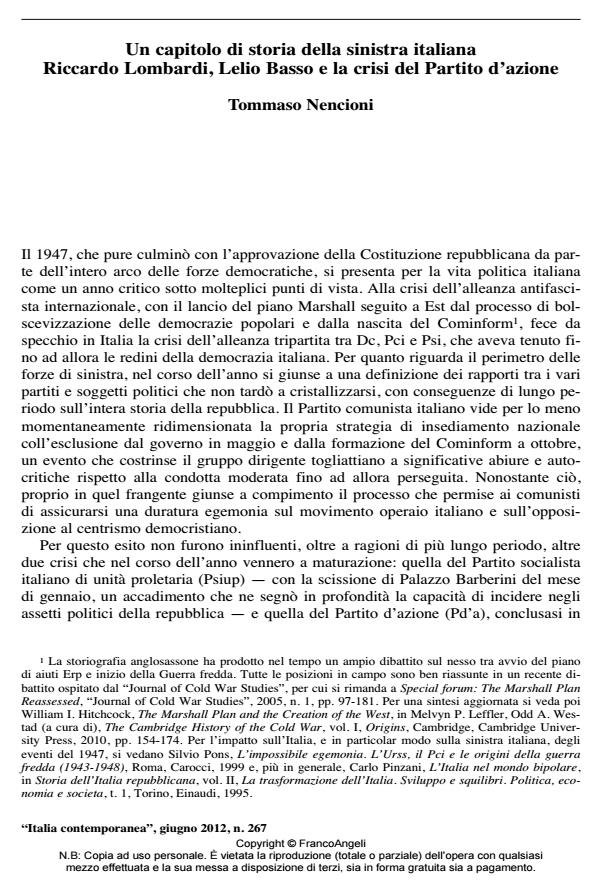A chapter in the history of the Italian Left. Riccardo Lombardi, Lelio Basso and the crisis of the Party of Action
Journal title ITALIA CONTEMPORANEA
Author/s Tommaso Nencioni
Publishing Year 2012 Issue 2012/267
Language Italian Pages 27 P. 211-237 File size 305 KB
DOI 10.3280/IC2012-267002
DOI is like a bar code for intellectual property: to have more infomation
click here
Below, you can see the article first page
If you want to buy this article in PDF format, you can do it, following the instructions to buy download credits

FrancoAngeli is member of Publishers International Linking Association, Inc (PILA), a not-for-profit association which run the CrossRef service enabling links to and from online scholarly content.
The fateful 1947 swing marked a turning point in the Italian political competition no less than abroad, producing both the passage to opposition of the working class parties against the ascent of Degasperi’s centrism and the parallel growth of communist hegemony within the Left. These events were at the same time cause and effect of great changes inside the socialist galaxy, with the Italian Socialist Party (PSI) taking a course that would soon result in a sharp break with its pre-Fascist tradition and the European social-democrat array, i.e. the creation of a Popular Front with the communists in view of the 1948 polls. Lastly, in that year another political formation that had contributed to the defeat of Fascism from a leftist stand knew its conclusive crisis: the Party of Action (Pd’A) split up, the majority of its leaders joining the socialists. Exploring the moves of Riccardo Lombardi, last secretary of the Pd’A, and Lelio Basso, then socialist secretary, during those stormy events, the A. tries to illuminate certain long-lasting inner features of the Italian Left.
Keywords: Italian Socialist Party (PSI), Party of Action (Pd’A), Riccardo Lombardi, Lelio Basso, Degasperi’s centrism, Popular Front
Tommaso Nencioni, Un capitolo di storia della sinistra italiana Riccardo Lombardi, Lelio Basso e la crisi del Partito d’azione in "ITALIA CONTEMPORANEA" 267/2012, pp 211-237, DOI: 10.3280/IC2012-267002